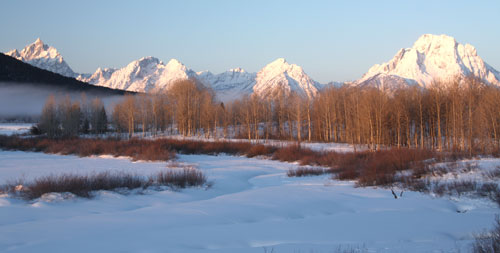|
Photography 101

Using a camera for
personal satisfaction is like learning to play a musical
instrument.
You have to keep at
it, improving your techniques through mistakes, as well as
through the satisfaction you feel from the photo that delights
you.
Skill in photography
doesn't just come naturally to most people.
The quality of your
photo depends on how well you see, not on the price of the
camera, or the number of lens you can afford.
Photography is a
complex subject. You can study it for years and still not know
very much.
Take one area at a
time and learn it. Then go to another area.
Communicate With
Pictures
-
Remember the
old saying A picture is worth a 1,000 words.
-
Pictures provide one of the best
means of communication. They can tell a story, show how to do something,
report on events of bring a smile.
The Camera
-
A camera is a
precision instrument --- even an simple camera. So treat with
TLC "Tender Loving Care@.
-
One of the most important steps
is to read the instruction manual. It will explain how to load the camera,
clean it and keep it in good repair.
-
Keep the camera clean. Dust and
fingerprints can cause cloudy looking pictures.
-
The best
way to clean dust off the camera is to blow off the lens.
Then use lens tissues to finish the job.
-
Never use a shirt tail, it
may scratch the lens.
-
Also, be sure to blow out
the inside of the camera each time when changing film. Dust and dirt
inside the camera can make spots on your pictures, as well as jam the
mechanism of the camera.
-
If your camera
has batteries, change them at least once a year. Also, clean
them every so often with a damp cloth.
-
If you will
not be using your camera very often, it is a good idea to
remove the batteries to avoid any corrosion.
-
Sand and water
can also be bad for your camera. So keep your camera in a
case or bag, when not in use, especially at the beach or in
dusty conditions.
-
Store your
camera with the shutter un-cocked. The spring will last longer
when there is no tension on them for long periods of time.
-
If for some reason, the shutter
cocking lever doesn't=t turn freely when winding, do not force
it. Have a photo repair person look it.
-
Make sure you keep your camera
away from heat and damp areas.
-
When traveling in a car, keep
your camera out of direct sunlight.
Film
-
There are as
many different types of films, as there are cameras.
-
Decide what type of film you
want. This decision should be based on what you want to shoot.
-
Use a fast
film in low light conditions, such as shooting in the woods
without a flash. Example: Kodacolor 400.
-
Use a medium
speed film for general shooting. Example: Kodacolor
100.
-
Use a slow
speed film in very bright sunlight, such as beach scene. Example: Kodachrome 25.
-
Be sure to check film to see
whether it is black and white, color slides or color print film.
-
Also, always
check the process date. If the film is out of date, DO NOT
buy it. Always develop it before the process date is
reached.
-
When you put film in your
camera, shoot the film and have it processed as soon as possible. Don=t wait six months.
-
When loading your camera, try to
avoid direct sunlight.
-
Film is very
sensitive to heat and humidity, so try to avoid these
problems. Never leave film around where it could get hot.
Basic Camera
Handling
-
First read
your instruction manual.
-
Loading -
follow your instruction manual.
-
Using your viewfinder window.
-
What the
viewfinder sees is what you get.
-
Keep your
eye fairly close to the viewfinder window, but not glued.
You should be able to see all four edges of the
viewfinder frame.
-
Hold your
camera steady.
-
Press the
shutter release button as smoothly as possible.
S-q-u-e-e-z-e the shutter. Some people hold their breath.
-
Another reminder, be careful not
to cover the lens accidentally with a finger, strap, or lens cover.
Using your Flash
-
The most
important factor in flash photography is the distance from
the camera (flash) to your subject.
-
If the
flash is too far away, your pictures will be dark.
-
If you are
too close, your pictures will be too light.
-
Read your
instruction manual for the proper distance range for your
flash.
-
Hint: Most simple cameras with a
build in flash, the flash range is 4 to 10 feet.
-
Care and Handling
-
The most
frequent cause of flash failure are weak
batteries.
-
Another major cause is the
battery contacts need cleaning.
-
When replacing batteries,
use alkaline batteries. They usually will not corrode. Also they have a
long life and will change up fast.
-
General Tips
-
Watch out for
reflective backgrounds, or eyeglasses in your scene. If you take
a flash picture at either, you will get an unattractive glare
spot in your pictures. Stand at an angle to mirrors, windows, or
shiny objects.
-
If you have more than
one subject and they are at different distances from the camera,
they will receive different amounts of flash light - some will be
too bright or too dark. Make sure that all your subjects are
roughly the same distance from the flash.
|